|
Strain Name
|
C57BL/6-Tnftm1(TNF)Bcgen Il17atm1(IL17A)Bcgen/Bcgen
|
Common Name
|
B-hTNFA/hIL17A mice
|
|
Background
|
C57BL/6
|
Catalog number
|
120548
|
Related Genes
|
TNF (tumor necrosis factor); IL17A (interleukin 17A)
|
NCBI Gene ID
|
21926,16171
|
Protein expression analysis
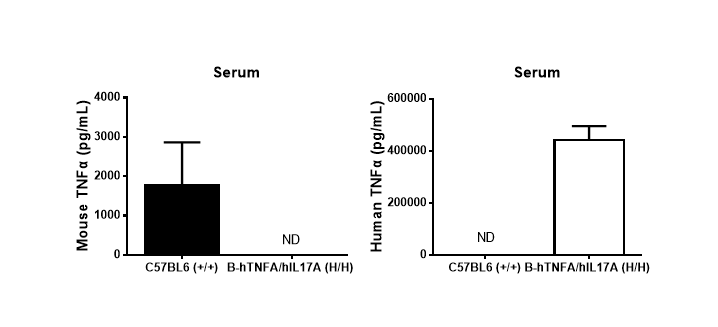
Strain specific TNFα expression analysis in homozygous B-hTNFA/hIL17A mice by ELISA.
Serum were collected from WT and homozygous B-hTNFA/hIL17A (H/H) mice stimulated with LPS in vivo, and analyzed by ELISA with species-specific TNFα ELISA kit. Mouse TNFα was detectable in WT mice. Human TNFα was exclusively detectable in homozygous B-hTNFA/hIL17A but not WT mice. ND: Not detected.
Protein expression analysis
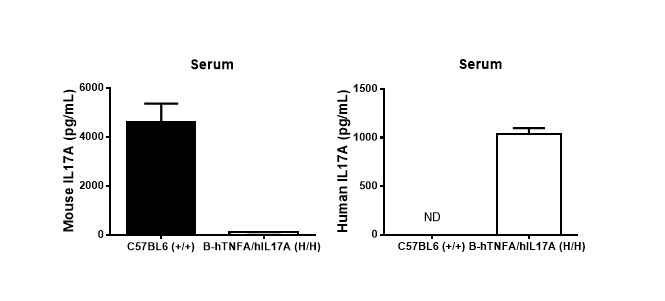
Strain specific IL17A expression analysis in homozygous B-hTNFA/hIL17A mice by ELISA.
Serum were collected from WT and homozygous B-hTNFA/hIL17A (H/H) mice stimulated with mCD3+mCD28 in vivo, and analyzed by ELISA with species-specific IL17A ELISA kit. Mouse IL17A was detectable in WT mice. Human IL17A was exclusively detectable in homozygous B-hTNFA/hIL17A but not WT mice. ND: Not detected.
Experimental schedule for induction of psoriasis-like skin lesions and in vivo efficacy of anti-human TNFA and IL17A antibody
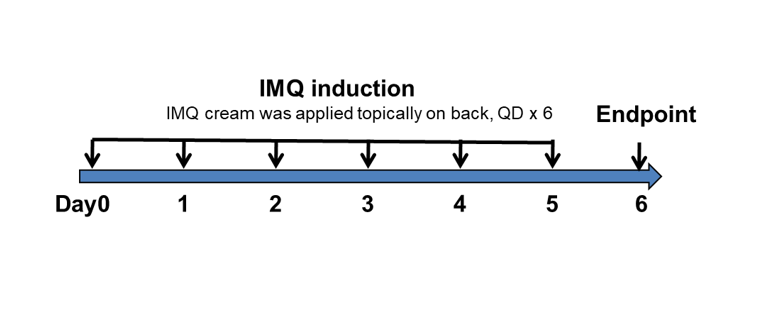
Experimental schedule for induction of psoriasis-like skin lesions in B-hTNFA/hIL17A mice. Mice at 10 to 12 weeks of age received a daily topical of commercially available IMQ cream on the shaved back for 6 consecutive days to induce psoriasis-like skin lesions. Severity of skin inflammation was daily scored and back skin was collected at the endpoint. IMQ: imiquimod.
In vivo efficacy of Bispecific antibodies (BsAbs) in psoriasis model induced in B-hTNFA/hIL17A mice
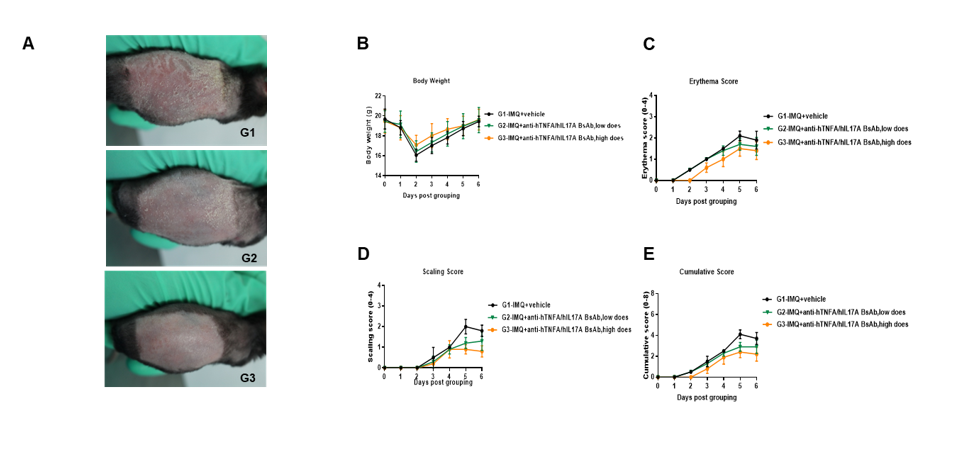
IMQ-induced skin inflammation in B-hTNFA/hIL17A mice phenotypically resembles psoriasis.
Mice (female, 10-12 week-old, n=5) were scored daily for up to 6 days for body weight and clinical signs of skin inflammation following treatment with imiquimod (IMQ) cream. Mice in each group were treated with different dose of antibodies produced in house. Doses are shown in legend. (A) Phenotypical presentation of mouse back skin after 6 days of treatment. (B) Body weight changes during treatment. (C-D) Erythema and scaling score of the back was scored daily on a scale from 0 to 4. Additionally, the cumulative score (erythema plus scaling) is depicted. Values are expressed as mean ± SEM.
In vivo efficacy of Bispecific antibodies (BsAbs) in psoriasis model induced in B-hTNFA/hIL17A mice
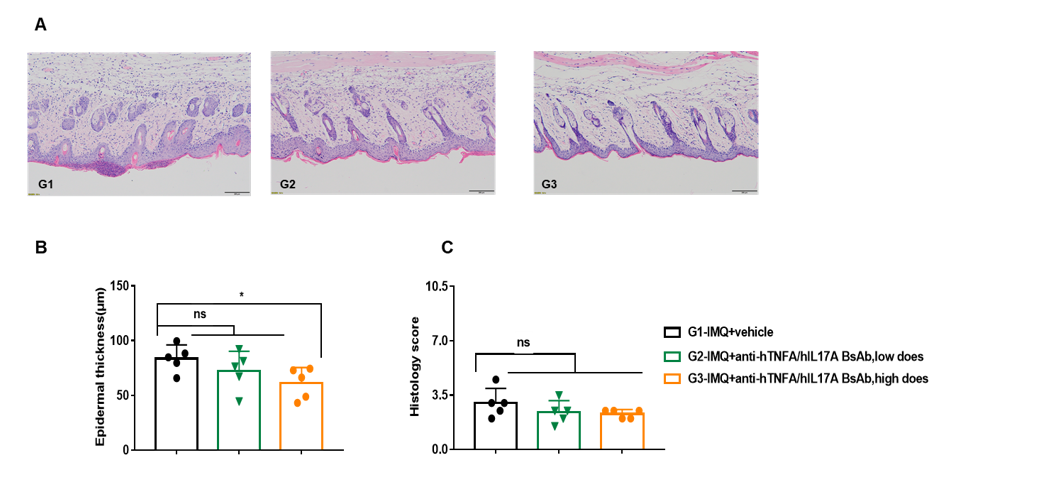
Dose dependent effects of BsAbs on keratinocyte proliferation and inflammatory cell infiltration in IMQ induced psoriasis-like skin lesions in B-hTNFA/hIL17A mice.
Back skin was collected at the endpoint and stained with Hematoxylin and eosin (H&E). (A) H&E staining of the back skin. (B) Epidermal thickness of the mice. (C) Histological changes were scored on a scale from 0 to 11. Results indicated that high-dose anti-hTNFA/hIL17A BsAbs (in house) significantly reduced psoriasis-like skin lesions in B-hTNFA/hIL17A mice, confirming that B-hTNFA/hIL17A mice provide a powerful model for in vivo evaluation of anti-human TNFA and IL17A bispecific antibodies.
















 京公網安備: 11011502005564號
京公網安備: 11011502005564號